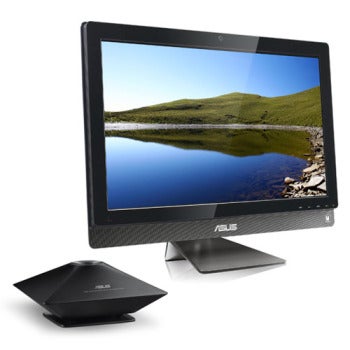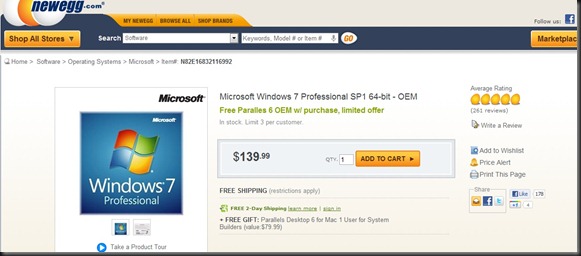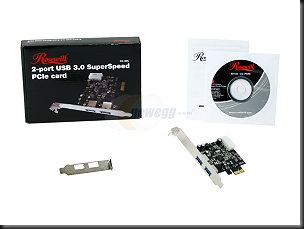By James Trew  posted May 16th 2012 8:38AM
posted May 16th 2012 8:38AM

In its ongoing battle against internet bottlenecks -- or let's face it -- techie bragging rights, Netgear has launched two more devices with that sweet, sweet 802.11ac data flow. Joining its recently announced R6300 router, is the R6200 model, which supports a combined WiFi speed of 1200 Mbps, has a USB port for networking devices, and of course also rides the a, b, g and n waves too -- if you don't have any 802.11ac kit just yet. Well, as it happens, Netgear thought of that, and has also announced the A6200 dual band USB WiFi adapter to, literally, bring your existing kit up to speed. If you want in on the action, you'll need to spend $179.99 and $69.99 respectively when they launch in Q3 this year. Full specs in the PR after the break.
Show full PR text
NETGEAR Introduces New Additions To 802.11ac Product Line For Next-Generation Wifi
NETGEAR Dual Band Gigabit Routers and USB Adapter Deliver WiFi Speeds Up To Three Times Faster than 802.11n
NETGEAR LOGO NETGEAR logo. (PRNewsFoto/NETGEAR) SANTA CLARA, CA UNITED STATES
Download image
SAN JOSE, Calif., May 15, 2012 /PRNewswire/ -- NETGEAR®, Inc. (NASDAQGM: NTGR), a global networking company that delivers innovative products to consumers, businesses and service providers, today announced a new line of products that provide access to next-generation high-speed 802.11ac wireless to meet growing customer needs for better and faster wireless on Internet-enabled WiFi devices in the home. The products-two wireless routers and one wireless USB adapter-make 802.11ac WiFi available to laptops and PCs, even before this capability has been built into these systems.
The previously announced NETGEAR R6300 WiFi Router is the industry's first 802.11ac router. Following up on the introduction of that product, NETGEAR is pleased to announce that it will be expanding its 11ac range with a second 11ac router and a USB adapter. The NETGEAR R6300 WiFi Router supports combined WiFi speeds up to 1750 Mbps, while the NETGEAR R6200 WiFi Router announced today supports approximate combined WiFi speeds up to 1200 Mbps and has a lower price point. Both are backward compatible with 802.11a/b/g/n to provide optimum interoperability with legacy WiFi devices and maintaining maximum performance on Wireless-n.
NETGEAR is also announcing the NETGEAR A6200 WiFi Adapter, a first-to-market 802.11ac dual band WiFi USB adapter that enables consumers to easily upgrade their existing PC or laptop to 802.11ac performance. The suite of products illustrates that consumers can continue to rely on NETGEAR to provide market-leading solutions that enable them to enjoy the fastest wireless speeds in their home.
The Next-Generation 802.11ac NETGEAR R6300 WiFi Router features:
The first 802.11ac dual band gigabit WiFi router enabling fifth-generation WiFi (5G WiFi) at gigabit speeds: 450 Mbps (@ 2.4 Ghz 802.11n) + 1300 Mbps (@ 5 Ghz 802.11ac) Mbps
Ultimate speed and range for mobile devices on the home network
Backward compatibility to 802.11a, b, g and n; perfect for current and future WiFi devices, while maintaining maximum Wireless-n performance
Two USB 2.0 ports to simultaneously access and share a USB hard drive and printer
The NETGEAR R6200 WiFi Router features:
802.11ac dual band gigabit WiFi router enabling fifth-generation WiFi (5G WiFi): approximately 300 Mbps (@ 2.4 Ghz 802.11n) + 900 Mbps[1] (@ 5 Ghz 802.11ac)
Improved speed and range for WiFi mobility
One USB 2.0 port to access and share a USB hard drive or printer
Backward compatibility to 802.11a, b, g and n; perfect for current and future WiFi devices
The NETGEAR A6200 WiFi Adapter features:
Ability to easily upgrade existing PCs or laptops to 802.11ac speed
Backward compatible with 802.11 a, b, g and n WiFi routers
Fast WiFi speeds for HD streaming
Swivel designed antennas ensure ideal antenna positioning for best performance
Flexible placement option with a desktop docking station
Other advanced features of the NETGEAR R6300 and NETGEAR R6200 WiFi Routers include:
NETGEAR Genie®: This free app for PCs, Macs, iOS and Android® smartphones and tablets enables home users to control, monitor, repair and manage their home networks easily through a simple, elegant dashboard. NETGEAR customers can download the utility at http://www.netgear.com/genie or from Google Play or the App Store.
NETGEAR MyMedia™: The NETGEAR genie mobile app provides the ability to find photos, video or music files anywhere on the network and play them on a DLNA media player.
AirPrint™ Support: The NETGEAR Genie app enables users to print on any USB or networked printer directly from an Apple iPad® or Apple iPhone®.
Guest network access: The NETGEAR genie app makes setting up a guest network simple. Guests and visitors can go online through the router without the need for secure login information. The guest network also prevents users from seeing and accessing a household's computers, printers, storage devices and other home network devices.
ReadySHARE® Printer: This feature makes it easy for the router to turn any existing USB printer into a fully functional networked printer that is fully compatible with Macs and PCs.
Media Server-DLNA: The R6300 and R6200 Routers are DLNA-ready and can stream to any DLNA-compatible device in your house, including the latest smart TVs, Blu-ray® players, media players, game consoles, handheld devices, tablets and more.
NETGEAR Live Parental Controls: Centralized, flexible, and reliable parental control solution for all the devices on the network, including Macs, Windows PCs, smartphones and tablets, for a safe online environment for children and teenagers. No subscription is required.
Automatic WiFi Security: The routers come with wireless security turned on out-of-the-box, complete with a pre-configured network name and password, protecting home WiFi networks by default.
Easy Installation: There's no CD required, so users can set the routers up with smartphones, tablets, ultrabooks and even MacBook Air®.
USB ports: Two ports are available to simultaneously support USB storage and a USB printer on the R6300 router. The R6200 Router features one port to support USB storage or a printer.
Easy to Install, Set Up and Use
A simple browser-based installation process for the NETGEAR R6300, R6200 and A6200 802.11ac products makes setup easy. The free NETGEAR genie app enables users to easily manage their home network, while the mobile NETGEAR MyMedia app acts like a remote control for quickly locating and moving media within the network.
"802.11ac, the next generation of Wi-Fi, is expected to ramp up quickly over the next three years," says Peter Cooney, wireless connectivity practice director at ABI Research. "A plethora of different product segments will move to 802.11ac, including routers, smartphones, PCs, media tablets and a range of consumer electronics equipment."
"NETGEAR developed these solutions to offer a complete wireless Internet ecosystem, allowing consumers to take full advantage of next-generation WiFi – even with their existing laptop or PC," says David Henry, vice president of product management, retail products at NETGEAR. "This visionary product line underscores NETGEAR's commitment to giving users everything they need to wirelessly access the Internet and download content at the absolute fastest speeds possible."
The upcoming 802.11ac wireless standard is the world's fastest WiFi, providing gigabit WiFi speeds allowing web content to download faster, and large video or music files to synch more quickly. The increased speed of 802.11ac technology is ideal for mobile devices, like smartphones and tablets, by providing three times the performance for a similar amount of battery consumption of devices utilizing the current 802.11n WiFi standard.
Pricing and Availability
The NETGEAR R6300 WiFi Router, priced at $199.99, will be available from major retailers and online in May 2012. The NETGEAR R6200 WiFi Router and NETGEAR A6200 WiFi Adapter retail for $179.99 and $69.99, respectively. They will be available in the third quarter of 2012.
Source: PR Newswire (http://s.tt/1bUvU)
 Apricorn's Velocity Solo x2 will endow your older computer with two SATA 6-gbps interfaces. You can bolt one 2.5- or 3.5-inch SSD right to the card.
Apricorn's Velocity Solo x2 will endow your older computer with two SATA 6-gbps interfaces. You can bolt one 2.5- or 3.5-inch SSD right to the card. 

 Windows Defender isn't subtle about being deactivated.
Windows Defender isn't subtle about being deactivated.  How you want your Settings tab to look!
How you want your Settings tab to look! 


 The 'UFO' at lower left is Asus's SonicMaster Subwoofer.
The 'UFO' at lower left is Asus's SonicMaster Subwoofer. 



















 PCI EXPRESS USB 3.0 SOLUTIONThe Rosewill RC-505 uses one free PCI Express slot to provide two USB 3.0 ports. With up to 5Gbps maximum transfer rate, the RC-505 offers an ideal connection for digital cameras, scanners, printers, external CD/DVD/Blu-ray writers, hard disk drives, flash memory drives and etc. It is also backward compatible with USB 2.0 and USB 1.1 devices. The Rosewill RC-505 supports simultaneous operation of multiple USB 3.0, USB 2.0 and USB 1.1 devices.
PCI EXPRESS USB 3.0 SOLUTIONThe Rosewill RC-505 uses one free PCI Express slot to provide two USB 3.0 ports. With up to 5Gbps maximum transfer rate, the RC-505 offers an ideal connection for digital cameras, scanners, printers, external CD/DVD/Blu-ray writers, hard disk drives, flash memory drives and etc. It is also backward compatible with USB 2.0 and USB 1.1 devices. The Rosewill RC-505 supports simultaneous operation of multiple USB 3.0, USB 2.0 and USB 1.1 devices. EXTERNAL POWER CONNECTORThe RC-505 has built-in 4-pin power connector for added power source to better support power hungry bus-powered devices.
EXTERNAL POWER CONNECTORThe RC-505 has built-in 4-pin power connector for added power source to better support power hungry bus-powered devices.
 Intel may unveil its next generation of processors--nicknamed "Ivy Bridge"--in April, according to the latest reports. The Ivy
Intel may unveil its next generation of processors--nicknamed "Ivy Bridge"--in April, according to the latest reports. The Ivy